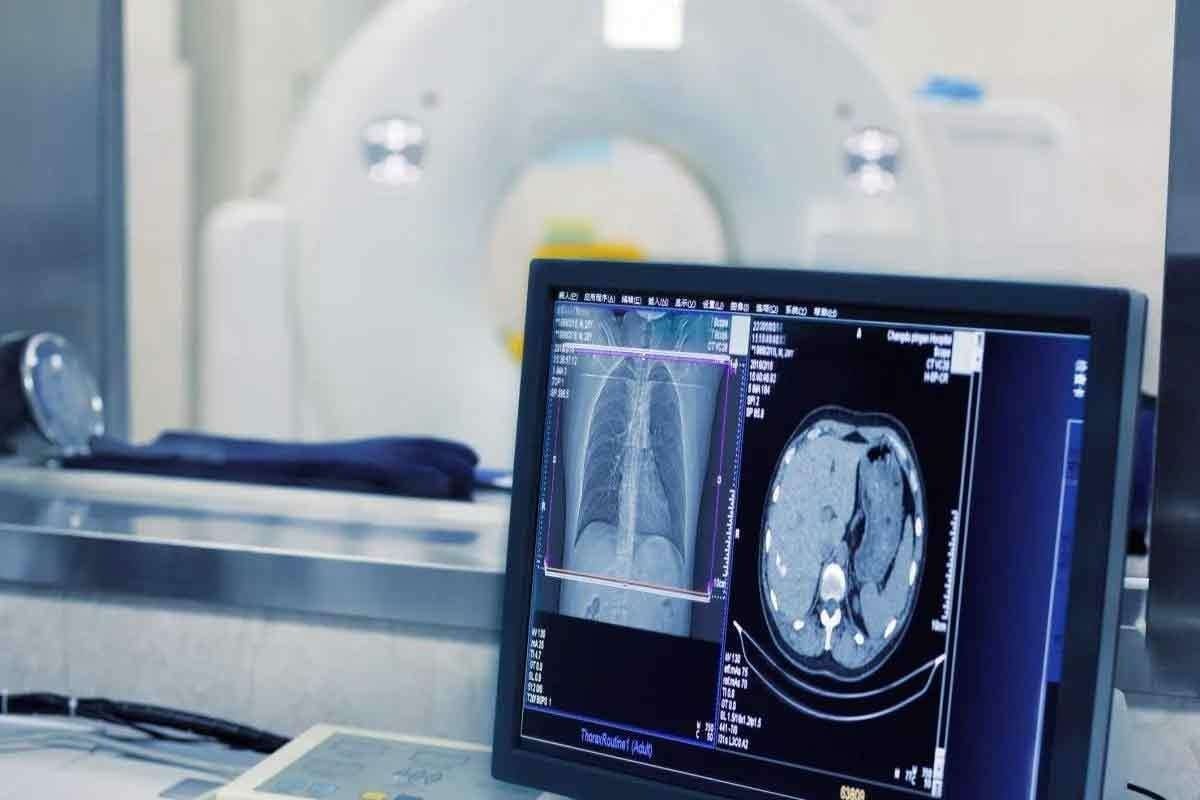Last Updated on November 27, 2025 by Bilal Hasdemir
Thyroid disorders affect millions of people worldwide. They have a big impact on health and wellbeing. Thyroid function tests, including the T3 uptake test, are key for diagnosing and managing these conditions.
The T3 uptake test is a diagnostic tool. It measures the thyroid hormone binding capacity in the blood. This gives valuable insights into thyroid function.
By checking how thyroid hormones bind to proteins in the blood, doctors can understand thyroid disorders better. They can then create effective treatment plans.
Key Takeaways
- The T3 uptake test measures thyroid hormone binding capacity.
- It provides insights into thyroid function and possible disorders.
- Thyroid hormone binding is key for understanding thyroid health.
- The test is a valuable diagnostic tool for healthcare providers.
- Effective treatment plans rely on accurate thyroid function assessments.
The Fundamentals of Thyroid Function

The thyroid gland is key in controlling metabolism, growth, and development. It makes thyroid hormones, which keep the body balanced and healthy.
Thyroid Gland Anatomy and Physiology
The thyroid gland is shaped like a butterfly and sits in the neck. It has two lobes joined by an isthmus. Follicular cells in the gland make thyroxine (T4) and triiodothyronine (T3).
This gland is very vascular, getting lots of blood. This blood brings iodine, needed for making thyroid hormones.
Thyroid Hormone Production and Regulation
Producing thyroid hormones is a complex process. It involves the hypothalamus, pituitary gland, and thyroid gland. It starts with the hypothalamus releasing thyrotropin-releasing hormone (TRH).
This hormone makes the pituitary gland release thyroid-stimulating hormone (TSH). TSH then tells the thyroid gland to make and release T4 and T3. Most T3 is made from T4 in the body’s tissues.
Thyroid hormones travel in the blood bound to proteins, like thyroxine-binding globulin (TBG). The free parts of T4 and T3 are active and can enter cells. They work on the body’s tissues.
What is a T3 Uptake Test?
The T3 uptake test is key in checking thyroid function and finding thyroid problems. It helps see how well thyroid hormones bind in the blood. This gives us important info on thyroid health.
Definition and Basic Principles
The T3 uptake test, or T3 resin uptake test, checks how much triiodothyronine (T3) binds to a resin in blood. This test shows how much thyroid hormone-binding proteins are available in the blood, like thyroxine-binding globulin (TBG).
This test works by looking at the free binding capacity of thyroid hormone-binding proteins. In a healthy body, some thyroid hormones are bound to proteins, while others are free to work. The test shows how much of each type of hormone is present.
Historical Development of the Test
The T3 uptake test has changed a lot over the years. At first, it was used alone to check thyroid function. Now, it’s used with other tests to get a full picture of thyroid health.
“The T3 uptake test was an important step in the evolution of thyroid function testing, showing how to indirectly check thyroid hormone binding capacity.”
With new thyroid testing methods, the T3 uptake test is not as central as it once was. But it’s useful in some cases, like when used with other tests to figure out the Free Thyroxine Index (FTI).
Knowing how the T3 uptake test has changed helps us understand its current uses and limits. As we learn more about thyroid function and testing, the T3 uptake test’s role will likely change too.
The Science Behind Thyroid Hormone Binding
Thyroid hormone binding is key to how well these hormones work in our bodies. After the thyroid gland makes and releases them, they go into the blood. There, they mostly stick to proteins.
Thyroid Hormone Transport in Blood
In the blood, thyroid hormones bind to proteins like thyroxine-binding globulin (TBG), transthyretin (TTR), and albumin. This binding is important because it controls how hormones get to tissues. Most hormones in the blood are bound, with only a little bit free.
The binding of thyroid hormones to proteins keeps hormone levels steady in the blood. This steady level is vital for keeping thyroid hormones working right, no matter what.
Role of Binding Proteins
Binding proteins are key in making thyroid hormones work right. They carry hormones through the blood to where they’re needed. Also, how well these proteins bind hormones affects how active the hormones are.
Thyroxine Binding Globulin (TBG) Function
Thyroxine-binding globulin (TBG) is the main protein for carrying thyroid hormones in human blood. It sticks well to thyroxine (T4) and a bit to triiodothyronine (T3). TBG’s ability to bind hormones affects how they’re distributed and broken down in the body.
Understanding TBG and other proteins is important for knowing how thyroid hormones work. Problems with these proteins can make it seem like thyroid hormones are not working right. But, this can be a misunderstanding if not looked at carefully in medical tests.
Clinical Purpose of the T3 Uptake Test
The T3 uptake test is key in checking how well the thyroid works. It looks at how proteins in the blood bind thyroid hormones. This helps doctors figure out and treat thyroid problems.
Indirect Measurement of Binding Protein Availability
The T3 uptake test checks the proteins that bind thyroid hormones. Thyroid hormones are mostly bound to proteins in the blood. The test finds out how many of these proteins are free to bind more hormones.
A high T3 uptake value means fewer proteins are free to bind hormones. This means more hormones are bound and less are free. On the other hand, a low T3 uptake value means more proteins are free. This could mean there’s more free hormone.
Relationship to Free Thyroid Hormone Levels
The T3 uptake test is linked to free thyroid hormone levels. It indirectly shows how much thyroid hormone is not bound to proteins. The free thyroxine index (FTI) uses this test and total T4 levels to estimate free T4. This is useful when thyroid function needs to be checked, like when protein levels change.
| Condition | T3 Uptake Value | Implication |
| Hyperthyroidism | High | Increased free thyroid hormone levels |
| Hypothyroidism | Low | Decreased free thyroid hormone levels |
| Normal Thyroid Function | Normal | Normal free thyroid hormone levels |
The T3 uptake test isn’t a direct measure of thyroid hormone levels. But it gives important info on how thyroid hormones bind. This helps doctors diagnose conditions like hyperthyroidism and hypothyroidism.
How the T3 Uptake Test is Performed
Healthcare providers use the T3 uptake test to check thyroid function. They collect and analyze a blood sample for this. It’s a key part of finding thyroid disorders and uses special lab methods.
Laboratory Methodology
The T3 uptake test has several steps. First, a blood sample is mixed with radioactive or labeled T3 hormone. Then, it’s mixed with a resin or agent that grabs the unbound T3.
The resin’s T3 uptake shows how much thyroid hormone-binding proteins are in the sample. This is key for understanding thyroid health.
The uptake of T3 is measured with radioimmunoassay (RIA) or enzyme-linked immunosorbent assay (ELISA. These methods give a clear picture of the binding proteins’ levels. This is vital for seeing how well the thyroid is working.
“The T3 uptake test provides valuable information about the availability of thyroid hormone-binding proteins, which is essential for understanding thyroid function.”
Sample Collection and Processing
Getting a blood sample for the T3 uptake test needs to be done right. Blood is taken from a vein in the arm and sent to the lab for testing.
Proper sample processing is key to avoid mistakes. Labs have strict rules for handling and storing blood. This keeps the sample quality high.
The T3 uptake test is a critical endocrine function test. It gives important clues about thyroid health. It helps doctors diagnose thyroid problems when done right.
Interpreting T3 Uptake Test Results
To understand T3 uptake test results, you need to know what’s normal and what’s not. This test shows how well thyroid hormones bind to proteins in your blood. It helps doctors see how well your thyroid is working.
Normal Reference Ranges
Every lab has its own normal range for T3 uptake tests. But usually, it’s between 25% and 35%. These numbers come from lots of healthy people. Always check the range your lab gives you.
High T3 Uptake Values and Clinical Significance
High T3 uptake means your thyroid hormone binding proteins might be low. This can happen in diseases like nephrotic syndrome or liver problems. It can also show up in hyperthyroidism, when you have too much thyroid hormone.
If your T3 uptake is high, your doctor might want to check your thyroid function more closely. They might test your free thyroid hormones directly.
Low T3 Uptake Values and Clinical Significance
Low T3 uptake means your thyroid hormone binding proteins are high. This can happen in pregnancy or when you’re on estrogen therapy. It can also be a sign of hypothyroidism, when you have too little thyroid hormone.
It’s important to understand the situation when your T3 uptake is low. Your doctor might need to adjust their interpretation based on your health or what medications you’re taking.
The Free Thyroxine Index (FTI) Calculation
The Free Thyroxine Index (FTI) is a big step forward in checking how well the thyroid works. It gives a detailed look at how much thyroid hormone is available.
Formula and Mathematical Relationship
The FTI uses the T3 uptake test and total T4 levels to calculate it. You multiply the total T4 by the T3 uptake value. This gives an index that shows how much free T4 there is.
FTI = Total T4 × T3 Uptake
This method helps doctors get a better idea of thyroid health. It’s useful when direct free T4 measurement isn’t possible.
Clinical Utility of FTI
The FTI is very helpful in checking thyroid health. It’s great when you can’t directly measure free T4.
- It helps check thyroid health in patients with abnormal thyroid binding globulin (TBG) levels.
- It gives a good estimate of free T4 levels when direct measurement isn’t available.
- It helps diagnose thyroid problems like hyperthyroidism and hypothyroidism.
Limitations of the FTI Approach
Even though the FTI is useful, it has some downsides.
| Limitation | Description |
| Inaccuracy in certain conditions | The FTI might not show free T4 levels right in patients with big changes in TBG or other binding proteins. |
| Lack of standardization | Different T3 uptake assays can cause FTI values to vary between labs. |
| Superseded by direct measurement | With new tech, direct free T4 measurement is easier. This might make the FTI less needed. |
In summary, the Free Thyroxine Index is a key tool for checking thyroid health. But, it’s not perfect. Knowing how it works, its benefits, and its limits is key for using it right in medical practice.
Comparing T3 Uptake Test with Other Thyroid Function Tests
Several tests are used to check thyroid function. These include the T3 uptake test, total T4 test, free T4 direct measurement, and TSH test. Each test gives different insights into thyroid health. Together, they help diagnose and manage thyroid problems.
T3 Uptake vs. Total T4 Test
The T3 uptake test and total T4 test look at different parts of thyroid function. The T3 uptake test checks how well thyroid hormone binding proteins work. The total T4 test measures all thyroxine in the blood, both bound and free.
Total T4 Test shows how much thyroxine the thyroid gland makes. But, it can be affected by things like pregnancy or estrogen therapy.
| Test | Measures | Influenced By |
| T3 Uptake | Binding protein availability | Factors affecting TBG |
| Total T4 | Total thyroxine (bound + free) | Pregnancy, estrogen therapy |
T3 Uptake vs. Free T4 Direct Measurement
Free T4 direct measurement shows the thyroxine not bound to proteins. It’s a better indicator of thyroid health than total T4.
Comparing T3 uptake and free T4 direct measurement shows their differences. T3 uptake indirectly shows binding protein saturation. Free T4 directly shows active thyroxine. Both tests are important for understanding thyroid function.
T3 Uptake vs. TSH Test in Diagnostic Algorithms
The TSH test measures thyroid-stimulating hormone from the pituitary gland. It helps check thyroid hormone production. It’s often the first test used to assess thyroid function.
In diagnostic algorithms, TSH testing is used with other tests like T3 uptake and free T4. These tests together give a full picture of thyroid health. They help diagnose both obvious and hidden thyroid disorders.
| Test | Primary Use | Clinical Utility |
| TSH | First-line test for thyroid dysfunction | Diagnosing overt and subclinical thyroid disease |
| T3 Uptake | Assessing binding protein availability | Useful in conjunction with total T4 for FTI calculation |
| Free T4 | Measuring active thyroxine fraction | Reflects thyroid status more accurately than total T4 |
Diagnosing Hyperthyroidism Using T3 Uptake Results
The T3 uptake test helps in diagnosing hyperthyroidism. It shows how well thyroid hormone binding proteins work. This test is key for those suspected of having hyperthyroid conditions.
Typical Result Patterns in Graves’ Disease
In Graves’ disease, a common hyperthyroidism cause, T3 uptake results are often high. This happens because Graves’ disease makes too many thyroid hormones. This leads to more T3 being bound to proteins in the test.
For more detailed information on the T3 uptake test, you can visit
T3 Uptake in Toxic Nodular Goiter
Toxic nodular goiter also shows up in T3 uptake tests. It helps check how much thyroid hormone is made and how proteins bind it.
Clinical Correlation and Confirmatory Testing
Even though the T3 uptake test is helpful, it’s important to match its results with clinical signs and other tests. Tests like free T4 and TSH levels are needed to confirm hyperthyroidism.
Using T3 uptake results with clinical findings and other tests makes diagnosing hyperthyroidism more accurate. It helps doctors choose the right treatment.
Diagnosing Hypothyroidism Using T3 Uptake Results
The T3 uptake test is a key tool for checking thyroid health. It’s very useful when hypothyroidism is suspected.
Typical Result Patterns in Primary Hypothyroidism
In primary hypothyroidism, the T3 uptake test often shows lower values. This drop is linked to the thyroid gland making less thyroid hormones.
T3 Uptake in Secondary Hypothyroidism
Secondary hypothyroidism, caused by pituitary gland issues, can also show changes in T3 uptake. But, the changes are different from primary hypothyroidism.
Clinical Correlation and Confirmatory Testing
It’s important to link T3 uptake results with clinical findings. Tests like TSH and free T4 are usually needed to confirm a diagnosis.
| Condition | T3 Uptake Value | Clinical Significance |
| Primary Hypothyroidism | Decreased | Reduced thyroid hormone production |
| Secondary Hypothyroidism | Variable | Pituitary gland dysfunction |
The T3 uptake test, along with other thyroid tests, helps improve diagnosis of hypothyroidism.
Conditions Affecting Thyroid Binding Proteins
Many factors can change how thyroid binding proteins work. These proteins, like thyroxine-binding globulin (TBG), are key for moving thyroid hormones in the blood.
Pregnancy and Estrogen Effects
Pregnancy changes thyroid binding proteins a lot. Estrogen levels go up during this time, making more TBG in the liver. This means more total thyroid hormones in the blood, but the active forms stay normal.
It’s important to know how pregnancy affects thyroid tests. This includes the T3 uptake test in pregnant women.
Liver Disease Impact on TBG Levels
Liver disease can mess with TBG production. Severe liver disease can lower TBG levels. This can change how thyroid hormones bind and affect test results.
| Liver Condition | Effect on TBG | Impact on T3 Uptake Test |
| Cirrhosis | Decreased TBG | Potential for falsely elevated results |
| Acute Hepatitis | Variable TBG | Variable impact on test results |
Genetic Variations in Binding Proteins
Genetics can change how thyroid binding proteins work. Some people might have too little or too much TBG. This can change how thyroid hormones bind and affect test results.
Medications Affecting Binding Protein Levels
Some medicines can change thyroid binding protein levels. For example, androgens and corticosteroids can lower TBG. Estrogen replacement therapy can raise it. Knowing these effects helps doctors understand test results better.
In summary, many things can change thyroid binding proteins. This includes pregnancy, liver disease, genetics, and some medicines. Doctors need to think about these when looking at thyroid test results. This helps give the right diagnosis and treatment.
Modern Clinical Applications and Limitations of the T3 Uptake Test
The T3 uptake test is important in today’s medicine. It helps doctors understand how thyroid hormones work in the body. This is key for diagnosing and treating thyroid problems.
Current Usage in Clinical Practice
Doctors use the T3 uptake test to check thyroid health. It’s useful when direct tests are not available or too expensive. It shows how well thyroid hormones bind to proteins in the blood.
Clinical utility of the T3 uptake test is clear. It helps doctors understand thyroid function tests better. For example, it’s useful in cases of pregnancy or liver disease, where thyroid hormone levels can change.
Evolution of Thyroid Testing Methodologies
Thyroid testing has improved a lot. New methods like equilibrium dialysis and tandem mass spectrometry are more accurate. They directly measure free thyroid hormones.
Yet, the T3 uptake test is not outdated. It’s simple and affordable. Doctors use it along with other tests to get a full picture of thyroid health.
The evolution of thyroid testing has shown the T3 uptake test’s limits. Its indirect nature means it can be affected by many factors. This includes changes in thyroid hormone binding proteins.
Conclusion
The T3 uptake test is a key tool for checking thyroid health. It helps doctors understand how thyroid hormones move in the blood. This is important for spotting thyroid problems.
Doctors use the T3 uptake test along with other tests to get a full picture of thyroid health. This way, they can make better choices for their patients.
This test is essential for finding and treating thyroid issues like too much or too little thyroid hormone. As new ways to test thyroid health come along, the T3 uptake test stays a vital part of diagnosis and treatment.
FAQ
What is the purpose of a T3 uptake test?
The T3 uptake test checks how well thyroid hormones bind in the blood. It helps doctors understand thyroid problems.
How does the T3 uptake test relate to thyroid hormone binding?
It measures how available thyroid hormones are in the blood. This is important because it shows how well thyroid hormones work.
What is thyroxine-binding globulin (TBG), and how does it impact thyroid hormone levels?
TBG is a protein that holds onto thyroid hormones. If TBG levels change, it can affect how much thyroid hormone is active in the body.
How is the T3 uptake test performed?
First, a blood sample is taken. Then, the lab analyzes it to see how well thyroid hormones bind.
What do high and low T3 uptake values indicate?
High values might mean too much thyroid hormone or not enough binding protein. Low values could mean too little thyroid hormone or too much binding protein.
How is the free thyroxine index (FTI) calculated, and what is its clinical utility?
The FTI uses the T3 uptake test and total T4 levels to estimate free T4. It helps doctors check thyroid function but has some limits.
How does the T3 uptake test compare to other thyroid function tests, such as total T4 and TSH tests?
The T3 uptake test gives different info than total T4 and TSH tests. It’s used with these tests to fully understand thyroid function.
Can conditions like pregnancy or liver disease affect T3 uptake test results?
Yes, things like pregnancy, liver disease, and some medicines can change thyroid binding proteins. This can alter T3 uptake test results.
Is the T3 uptake test used in modern clinical practice?
Yes, it’s used in some cases, like when thyroid function needs to be checked in patients with abnormal binding proteins.
How do genetic variations in binding proteins impact T3 uptake test results?
Genetic changes in proteins like TBG can change T3 uptake test results. This might make it hard to understand thyroid function correctly.






